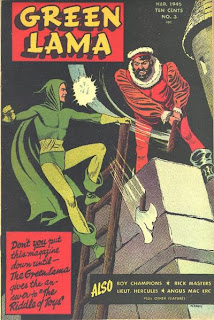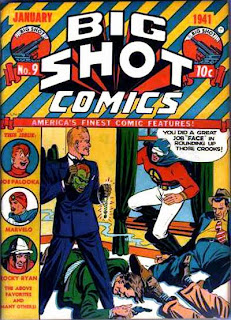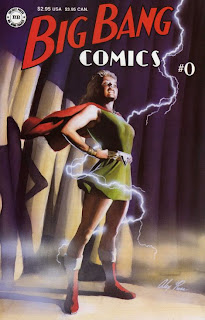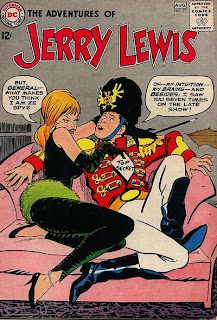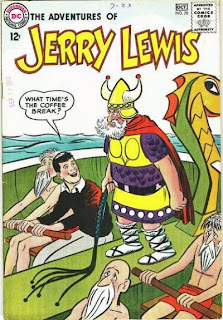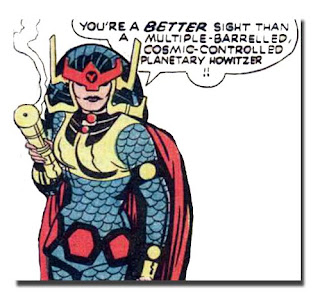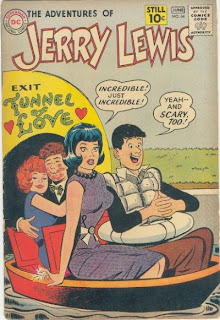Okay, this is a serious one, as opposed to the chicanery I've indulged in the past week. To be honest, what inspired the last entry was a realization about women in comics. I had wanted to write a bit about which female characters I thought had the best origins when I came to realize that, aside from Wonder Woman, most female superheroes have bupkes when it comes to origins, at least when compared to their male counterparts. For example, the notion of the "self-made man" is all over the place; you see it with Batman, Iron Man, and pretty much every inventor character ever. "I've created this amazing device; instead of patenting it and making a fortune, I'll use it to FIGHT CRIME!"
You don't see that as much with female superheroes. Generally, there's not much innovation when it comes to their origins. On the DC side of things, since so many of their notable female characters are tied to male characters, their origins mirror that of their male counterparts. For example, there's not much difference between the origin of Superman and Supergirl, except that Supergirl was a teenager and Superman acted like a dick upon first meeting her. "Oh, a cousin! I'm not alone anymore! This is the happiest day of my li- what's that? Live with me? Oh, no. No, no, no. That would put a crimp in my swinging bachelor lifestyle. It's the orphanage for you, missy!"
On the Marvel side of the coin, things are a bit different. There aren't as many female partners/ sidekicks to established male heroes; for example, there's been two (I think) characters named Spider-Woman, and neither one had an origin that had anything to do with the Webslinger. The only heroine that fits that is She-Hulk. Marvel's main problem is the Mutant Origin. At least freak accidents, when done right, can serve as a memorable part of the character's backstory. Look at Spidey, the Flash, Daredevil, and others. With the mutant thing though, characters were born with those powers. It's kinda dull. Granted, how a character's powers first manifest often substitute for an actual origin, but usually the powers are just there. How this comes up is that a lot of Marvel's key female characters are mutants: Storm, Jean Grey, Scarlet Witch, Emma Frost, Firestar (
Spider-Man and the Amazing Friends 4 LIFE!!!), etc. There's almost no chance for agency when it comes to that part of the character's backstory.
Aside from the two listed above, you have basically three categories for where a given female character's powers come from: she's an alien (or whatever) that came to earth, the aforementioned freak accident, or she got her powers or equipment from a man. The latter might seem to be the least flattering of the three, but in the hands of a talented writer, it can actually work really well. A discussion on a message board I frequent brought up Marvel's The Wasp, who I should've thought of right away, as one of the earliest comics I ever bought featured a retelling of the origin of her and Hank Pym. (I didn't know that at the time of course; I bought it because the cover depicted Wonder-Man wrestling a group of Soviet apes, and as you are all aware I'm sure, Monkeys Sell Comics.) In a nutshell, Janet Van Dyne's father gets killed. Janet visits local shut-in and scientist Dr. Henry Pym. She says, "Give me some superpowers so I can avenge my father. You can make a costume, too, I suppose." Hank, amazed that a beautiful and spirited woman is talking to him, does so, and they become the Wasp and Ant-Man, respectively. The reason this was brought up was that someone on the aforementioned message board brought up the Wasp and Ant-Man in Mark Millar's
Ultimates as an example of a bad grim n' gritty reboot. There, Janet has her powers as a result of *sigh* being a mutant, and Hank essentially just adapts all his technology from her body and passes it off as his own innovation. In one fell swoop, the poster argued, Millar managed to make both characters less impressive. Wasp lost all her spunk and, ultimately, agency in receiving her powers, and Hank became a opportunistic lout who isn't really responsible for anything he's accomplished.
As a whole, women in comics get the short end of the stick. Supergirl or Batgirl will never be portrayed as being equal to, much less superior to, Superman or Batman, as somehow that would make the male characters less special. ("When everyone's special, no one will be.") And of course, the now classic site
Women In Refrigerators details the other misfortunes women characters are subjected to.
This isn't necessarily unique to comics, mind you. This kind of thing is present through all American media. Maleness (and whiteness, though that's a topic for a whole 'nother essay) is assumed to be the norm. A lot of the theories regarding are summed up beautifully in Laura Mulvey's
"Visual Pleasure and Narrative Cinema". For those of you who don't want to read all that (and I can't say I blame you; it's not the easiest text), I'll try to boil it down in my ham-fisted, easy-spoken way.
Essentially, in the context of a film, men and women characters have two separate roles- the man is the spectator, the women is the spectacle. In more everyday terms, the woman gets looked at while the man does the looking. Basically, men have the agency in a story while women are essentially props. Granted, that's a gross oversimplification, and there's a lot more that Mulvey discusses, but that's the important thing as far as this discussion is concerned. Remember it, because it's going to be relevant in a few paragraphs.
While Mulvey's essay is primarily concerned with films, a lot of it is applicable to comics. Comics are, after all, a visual medium, and there's a lot of overlap between film and comics. Look at the number of comic artists who do storyboards for films and tv series.
I bring up Mulvey because of a cover I came across recently, an issue of America's Best Comics. The covers would feature now-defunct Nedor publication's most popular heroes in zany predicaments or hijinx. These covers would have almost nothing to do with the interior stories. In that regard, it's not unlike DC's World's Finest Series; Batman & Robin do stuff with Superman on the cover, though there are no Superman/ Batman stories within the comic (though the format would change in later years). In fact, here's a handy side-by-side comparison....


Now, I'm not one to overly analyze covers, unless I'm planning to make fun. However, when I came across America's Best Comics #27 from 1948, I actually found myself seriously interpreting what I was seeing. Take a look....
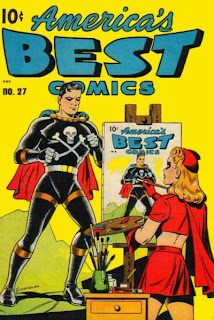
Here, we see the Black Terror, Nedor's most popular male character, posing for Miss Masque, the most popular female character. What's happening here is a total inverse of the typical male/female spectatorship roles. Masque is the one with all the active agency, while the Terror has assumed the role of passivity. It's certainly a surprising change of pace, especially considering other covers in the series; one depicts the male heroes presenting Miss Masque a beauty pageant award, while another shows them saving her from Wonder Woman-style bondage.
Granted, this doesn't invalidate the traditional roles of male/female agency; if anything, it only serves to further highlight the disparity that continues in superhero comics to this day. I mentioned both the Wasp and the trend of dead superheroines earlier, so I should not that in a recent story, the Wasp died and Hank Pym has assumed her moniker to uphold her legacy. It seems that no matter how far comics might progress, the industry is still capable of stumbling backwards.



